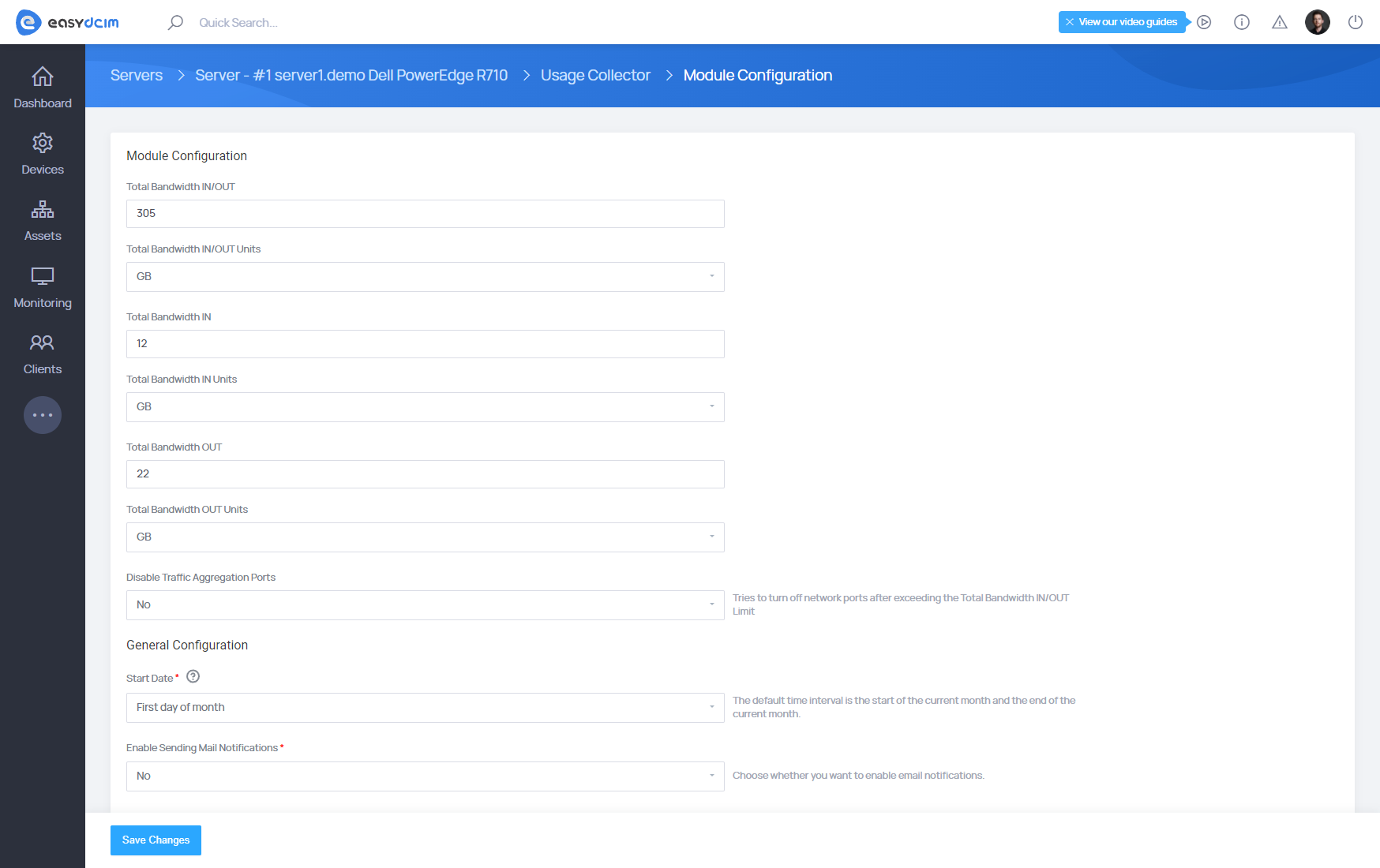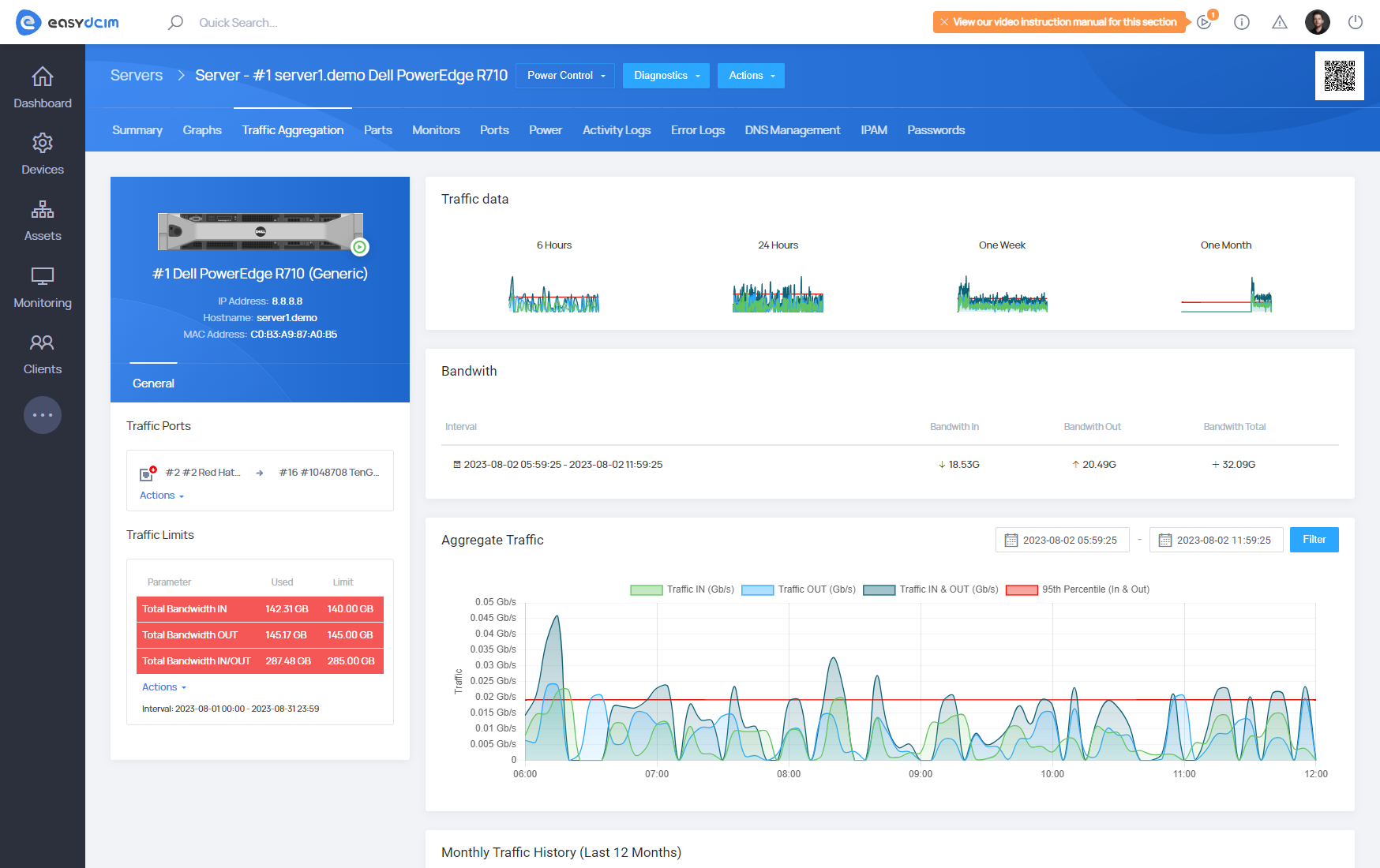Usage Collector Extension
About
Usage Collector For EasyDCIM extension allows to impose monthly limits on particular values for the device. After exceeding the threshold value, the administrator is notified about exceeding the limits set in the configuration by a proper e-mail. Currently, the extension enables to limit the following values:
- Total Bandwidth In/Out
- Total Bandwidth In
- Total Bandwidth Out
The values for a given configuration are retrieved on the basis of data in the Traffic Aggregation section of the device. The time interval during retrieving data is set to the beginning and the end of the current month.
Features
- Inbuilt Driver Based On Polling And Event System
- Traffic Aggregation - Count Limits For Groups Of Ports Per Server
- Presentation Layer With Filtering And Graphs
- View Current Resource And Power Usage
- Impose Limits On Traffic (In/Out/Total) For Servers
- Impose Limits On Power Usage (Amps) For Servers And PDU Devices
- Automatic Limit Configuration During Server And PDU Device Creation
- Disable Network Ports Upon Exceeding Traffic Limits (In/Out/Total)
- Toggle Configurable Email Notifications Sent Upon Exceeding Traffic And Power Usage Limits
- Define Recipients Of Email Notifications
- Dedicated Controller In API For External Integrations
Limits configuration
Limits can be set globally for all devices in the system or individually for each device, depending on the configuration needed in your data center.
Global configuration
The global limit configuration can be found in the “Usage Collector” extension view under the “Settings” section, accessible from the top “Actions” menu. Global configurations apply only when there is no specific configuration for an individual device. Individual device configurations override the global configuration.
Per-device configuration
The configuration of limits can be found in the “Traffic Aggregation” tab of a given server. In the box on the left side, you will find information about the limits and current consumption. Select the “Limits Configuration” action to adjust the limits.
- Total Bandwidth IN/OUT - The limit for incoming and outgoing traffic for the device during the current month.
- Total Bandwidth IN/OUT Units - The units used for the incoming and outgoing traffic limits (MB, GB, TB).
- Total Bandwidth IN - The incoming traffic limit for the device during the current month.
- Total Bandwidth IN Units - The units used for the incoming traffic limit (MB, GB, TB).
- Total Bandwidth OUT - The outgoing traffic limit for the device during the current month.
- Total Bandwidth OUT Units - The units used for the outgoing traffic limit (MB, GB, TB).
- Disable Traffic Aggregation Ports - Specifies whether the device’s network ports should be disabled when the “Total Bandwidth IN/OUT” limit is exceeded.

Additional configuration includes:
- Start Date - day of the monthly time interval. For example, if you select the fifth day of the month, the monthly limits will apply from the fifth day of the current month to the fifth day of the next month. The default time interval is the beginning and end of the current month.
- Enable Sending Mail Notifications - choose whether the administrator will be notified about exceeding limits by e-mail.
- Send Reached Limit Notification Every - choose the time interval after which the administrator will be informed.
- Send Notification When Limit Reaches - choose a percentage of usage defining when the administrator will be notified (example: the limit of Total Bandwidth In is set to 10 GB, Send Notification When Reaches Limit is set to 110%. The administrator will be notified after exceeding 11 GB of usage).
Current usage values
The current consumption values for the current month can be seen in the “Traffic Aggregation” section of a given server. You will find there information on the assigned limits and the current data usage per limit.




















